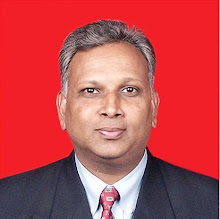At the start of every kaizen event I ask the group, What are your expectations? The most common answer is, To learn. They may say to learn about a process, to learn m o re ab o u t an area of the company that t h e y a re n’ t familiar with, or to learn about the principles of the Toyota Production System and how they are used to improve a process.
As a facilitator, my expectations are not only to achieve the business objectives of the event, but to help the group learn so that they know the process and the principles, and can make improvements every day, thereby creating continuous improvement. The common thread in all of these expectations is to learn.
Learning is an essential part of continuous improvement. As Jeffrey Liker in The Toyota Way states, “Of all the institutions I’ve studied I believe
But what is a learning organization? Peter Senge in his book The Fifth Discipline describes learning organizations as organizations where people continually expand their capacity to create the results they truly desire, where new and expansive patterns of thinking are nurtured, where collective aspiration is set free, and where people are continually learning how to learn together. Senge identifies five disciplines that are key to building a learning organization: shared vision, personal mastery, team learning, mental models, and systems thinking.
Though other characteristics of learning organizations have been written about, most still draw upon the initial ideas and concepts that Senge described.
Shared vision
All groups or organizations that have achieved greatness have had goals, values, and missions that are deeply shared throughout. Don’t mistake shared vision with a company’s vision or mission statement, they may not be the same. Shared visions motivate and drive people to excel, not because the boss tells them to, but because they want to. Many leaders have a personal vision statement they never articulate to the organization. These types of leaders may still be effective in their roles because they are charismatic individuals and motivate people to follow them.
When they leave the organization, the motivation of the employees will leave, too. In order for an organization to have a common commitment, focused on long-term results and achievements, its members must have shared visions that last well beyond the tenure of any one individual leader.
A great example of this is when John F Kennedy said in 1961 that
Personal mastery
Personal mastery is the individual’s motivation to learn and become better, much as a craftsman or artist is driven to master his discipline. In a learning organization, personal mastery tells us that we are committed to a lifetime of learning and are able to realize the results that matter most to us. An organization’s ability to learn is determined by its individual members’ desire to learn. Either the drive to develop, improve, master, and excel exists or it doesn’t. For that reason, you need to have individuals that are truly committed and motivated.
(The writer is director of TBM Lean Sigma Institute)
Monday, August 4, 2008
A learning organization
Subscribe to:
Post Comments (Atom)

No comments:
Post a Comment